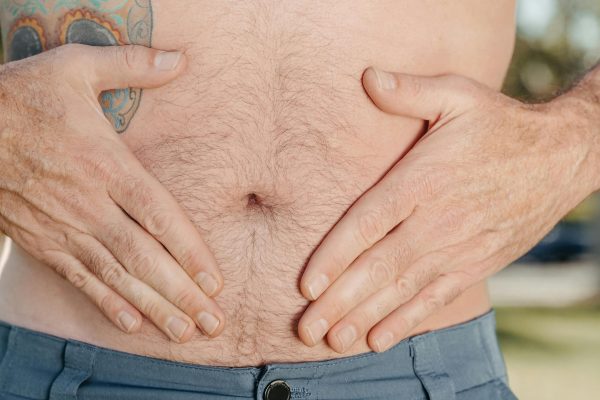In recent years, hair transplant surgery has become an increasingly popular solution for men experiencing hair loss. One critical factor often overlooked in discussions about hair loss and hair transplant surgery is the role of testosterone. Understanding the relationship between testosterone and hair transplant surgery is essential for anyone considering this procedure. This article delves into the intricate connections between testosterone levels, hair loss, and hair transplant surgery, providing comprehensive insights for men seeking effective solutions to restore their hair and confidence.
- Understanding Testosterone and Its Impact on Hair Loss
- Hair Transplant Surgery: A Viable Solution
- How Testosterone Levels Affect Hair Transplant Outcomes
- The Psychological Impact of Hair Loss and Hair Restoration
- Choosing the Right Hair Transplant Surgeon
- Conclusion
- Studies and Sources
- 1. The Role of DHT in Hair Loss
- 2. Follicular Unit Transplantation (FUT) and Follicular Unit Extraction (FUE)
- 3. Post-Transplant Considerations and Medication
- 4. Psychological Impact of Hair Loss
- 5. Choosing the Right Hair Transplant Surgeon
- 6. Overview of Hair Transplant Techniques
- 7. Long-Term Effects of Hair Transplant Surgery
- FAQs: Testosterone and Hair Transplant Surgery
- Question: How does testosterone affect hair loss?
- Question: Can hair transplant surgery work for those with high testosterone levels?
- Question: What is the role of Finasteride in hair transplant surgery?
- Question: Are there any side effects of using Finasteride?
- Question: How effective is hair transplant surgery in restoring hair?
- Question: What are the differences between FUE and FUT hair transplant techniques?
- Question: How long does it take to see results from a hair transplant?
Understanding Testosterone and Its Impact on Hair Loss
Testosterone is a hormone predominantly produced in the testicles and is responsible for the development of male characteristics such as muscle mass, deep voice, and body hair. However, testosterone also plays a significant role in hair growth and hair loss. The hormone dihydrotestosterone (DHT), derived from testosterone, is a key player in male pattern baldness (androgenetic alopecia).
The Role of DHT in Hair Loss
DHT is formed when testosterone is converted by the enzyme 5-alpha reductase. While DHT is crucial for certain bodily functions, it can have adverse effects on hair follicles. DHT binds to androgen receptors in the hair follicles, causing them to shrink. Over time, this miniaturization process leads to thinner, weaker hair and eventually results in hair loss. Men with higher levels of DHT are more likely to experience significant hair thinning and balding.
Does testosterone cause hair loss: Understanding Androgenic Alopecia
Hair Transplant Surgery: A Viable Solution
Hair transplant surgery is a medical procedure designed to restore hair by transplanting hair follicles from one part of the body (usually the back or sides of the scalp) to the balding or thinning areas. There are two primary techniques used in hair transplant surgery: Follicular Unit Transplantation (FUT) and Follicular Unit Extraction (FUE).
Follicular Unit Transplantation (FUT)
FUT involves removing a strip of skin from the donor area, usually the back of the scalp. The strip is then dissected into individual follicular units and transplanted into the recipient area. This technique is known for its high yield of grafts and can be beneficial for individuals requiring a significant number of hair follicles.
Follicular Unit Extraction (FUE)
FUE, on the other hand, involves extracting individual hair follicles directly from the donor area using a specialized punch tool. These follicles are then transplanted into the recipient area. FUE is less invasive than FUT and leaves minimal scarring, making it a preferred option for many patients.
How Testosterone Levels Affect Hair Transplant Outcomes
Testosterone levels can significantly influence the results of hair transplant surgery. While the surgery itself does not alter hormone levels, understanding a patient’s testosterone profile is crucial for predicting long-term success.
Post-Transplant Considerations
Post-transplant, the transplanted hair follicles should be resistant to DHT. Since the donor hair is typically taken from areas less susceptible to DHT, such as the back or sides of the scalp, the transplanted hair generally continues to grow even in the presence of high DHT levels. However, it is important to note that hair loss can continue in untreated areas of the scalp, leading to the potential need for additional transplants in the future.
Medications and Maintenance
To maintain the results of a hair transplant and manage testosterone-related hair loss, patients may be prescribed medications such as finasteride or minoxidil. Finasteride works by inhibiting the conversion of testosterone to DHT, thereby reducing its impact on hair follicles. Minoxidil, on the other hand, is a topical treatment that stimulates hair growth. Combining these treatments with hair transplant surgery can enhance overall outcomes and prolong the benefits of the procedure.
Understanding Testosterone Testing: When and How to Get Checked
The Psychological Impact of Hair Loss and Hair Restoration
Hair loss can have a profound psychological impact on men, affecting their self-esteem and confidence. The decision to undergo hair transplant surgery is often driven by the desire to regain a youthful appearance and improve self-image.
Boosting Self-Esteem and Confidence
Successfully restoring hair through a transplant can significantly boost a man’s self-esteem and confidence. The transformation not only affects physical appearance but also enhances mental well-being. Feeling good about one’s appearance can lead to improved social interactions, professional opportunities, and overall quality of life.
Realistic Expectations and Counseling
While hair transplant surgery can provide remarkable results, it is essential for patients to have realistic expectations. Consulting with a qualified and experienced hair transplant surgeon can help set achievable goals and ensure patients understand the limitations and potential outcomes of the procedure. Pre-operative and post-operative counseling can also provide emotional support and address any concerns or anxieties related to the surgery.
Choosing the Right Hair Transplant Surgeon
Selecting a skilled and experienced hair transplant surgeon is critical to achieving the best possible results. Factors to consider when choosing a surgeon include their credentials, experience, patient reviews, and before-and-after photos of previous procedures.
Credentials and Experience
A reputable hair transplant surgeon should have board certification and extensive experience in performing hair transplant procedures. Board certification ensures that the surgeon has met rigorous standards of training, expertise, and ethical conduct.
Patient Reviews and Testimonials
Reading patient reviews and testimonials can provide valuable insights into the surgeon’s skills and patient satisfaction. Positive reviews and high ratings are indicative of a surgeon’s ability to deliver successful outcomes.
Before-and-After Photos
Examining before-and-after photos of previous patients can help potential patients gauge the surgeon’s proficiency and the quality of their work. These photos showcase the surgeon’s ability to create natural-looking results and highlight their attention to detail.
Conclusion
Understanding the relationship between testosterone and hair transplant surgery is crucial for men considering this procedure. By comprehensively addressing the impact of testosterone and DHT on hair loss, exploring the various hair transplant techniques, and emphasizing the importance of post-transplant care, men can make informed decisions about their hair restoration journey. Choosing a qualified surgeon and maintaining realistic expectations are key to achieving successful and satisfying results.
Unlocking Vitality: Understanding Testosterone Replacement Therapy (TRT)
Studies and Sources
1. The Role of DHT in Hair Loss
- Title: “Androgenetic Alopecia and the Role of 5-alpha Reductase Inhibitors”
- Source: National Center for Biotechnology Information (NCBI)
- Link: Androgenetic Alopecia and 5-alpha Reductase Inhibitors
2. Follicular Unit Transplantation (FUT) and Follicular Unit Extraction (FUE)
- Title: “A Review of Follicular Unit Extraction: Technique, Complications, and Recent Advancements”
- Source: Journal of Cutaneous and Aesthetic Surgery
- Link: Review of Follicular Unit Extraction
3. Post-Transplant Considerations and Medication
- Title: “Efficacy and Safety of Finasteride in the Treatment of Male Androgenetic Alopecia”
- Source: Journal of the American Academy of Dermatology
- Link: Efficacy and Safety of Finasteride
4. Psychological Impact of Hair Loss
- Title: “Psychosocial Impact of Androgenetic Alopecia on Men: A Multinational Survey”
- Source: Journal of the European Academy of Dermatology and Venereology
- Link: Psychosocial Impact of Androgenetic Alopecia
5. Choosing the Right Hair Transplant Surgeon
- Title: “Factors Affecting Patient Satisfaction with Hair Transplant Surgery”
- Source: Aesthetic Surgery Journal
- Link: Patient Satisfaction with Hair Transplant Surgery
6. Overview of Hair Transplant Techniques
- Title: “Hair Transplantation: The State of the Art”
- Source: Clinical and Experimental Dermatology
- Link: Hair Transplantation: The State of the Art
7. Long-Term Effects of Hair Transplant Surgery
- Title: “Long-Term Outcomes of Hair Transplantation”
- Source: Dermatologic Surgery
- Link: Long-Term Outcomes of Hair Transplantation
“`html
FAQs: Testosterone and Hair Transplant Surgery
Question: How does testosterone affect hair loss?
Testosterone, specifically its derivative dihydrotestosterone (DHT), plays a significant role in hair loss. High levels of DHT can shrink hair follicles, leading to androgenetic alopecia, also known as male pattern baldness.
Question: Can hair transplant surgery work for those with high testosterone levels?
Yes, hair transplant surgery can be effective for individuals with high testosterone levels. However, it’s important to manage DHT levels post-surgery to prevent further hair loss. Medications like Finasteride can be used to inhibit DHT production.
Question: What is the role of Finasteride in hair transplant surgery?
Finasteride is a medication that helps to reduce DHT levels, which can prevent further hair loss and improve the success rate of hair transplant surgeries. It’s often prescribed to maintain hair growth after the procedure.
Question: Are there any side effects of using Finasteride?
While Finasteride is generally well-tolerated, some users may experience side effects such as decreased libido, erectile dysfunction, and breast tenderness. These side effects are relatively rare and usually reversible upon discontinuation of the medication.
Question: How effective is hair transplant surgery in restoring hair?
Hair transplant surgery is highly effective, with success rates varying between 90-95%. The outcome depends on factors such as the surgeon’s expertise, the technique used (FUE or FUT), and the patient’s adherence to post-operative care instructions.
Question: What are the differences between FUE and FUT hair transplant techniques?
FUE (Follicular Unit Extraction) involves individually extracting hair follicles from the donor area and transplanting them to the balding area. FUT (Follicular Unit Transplantation) involves removing a strip of scalp from the donor area, dissecting it into individual follicular units, and then transplanting them. FUE has a quicker recovery time and less scarring, while FUT can be more cost-effective for larger transplants.
Question: How long does it take to see results from a hair transplant?
It typically takes about 3 to 4 months to see initial results from a hair transplant, with significant growth visible around 6 to 9 months. Full results can be expected within 12 to 18 months post-surgery.
“`
Testosterone and Skin Health: Effects on Acne, Aging, and Overall Appearance
Testosterone and Confidence: How Hormonal Balance Affects Self-Esteem





